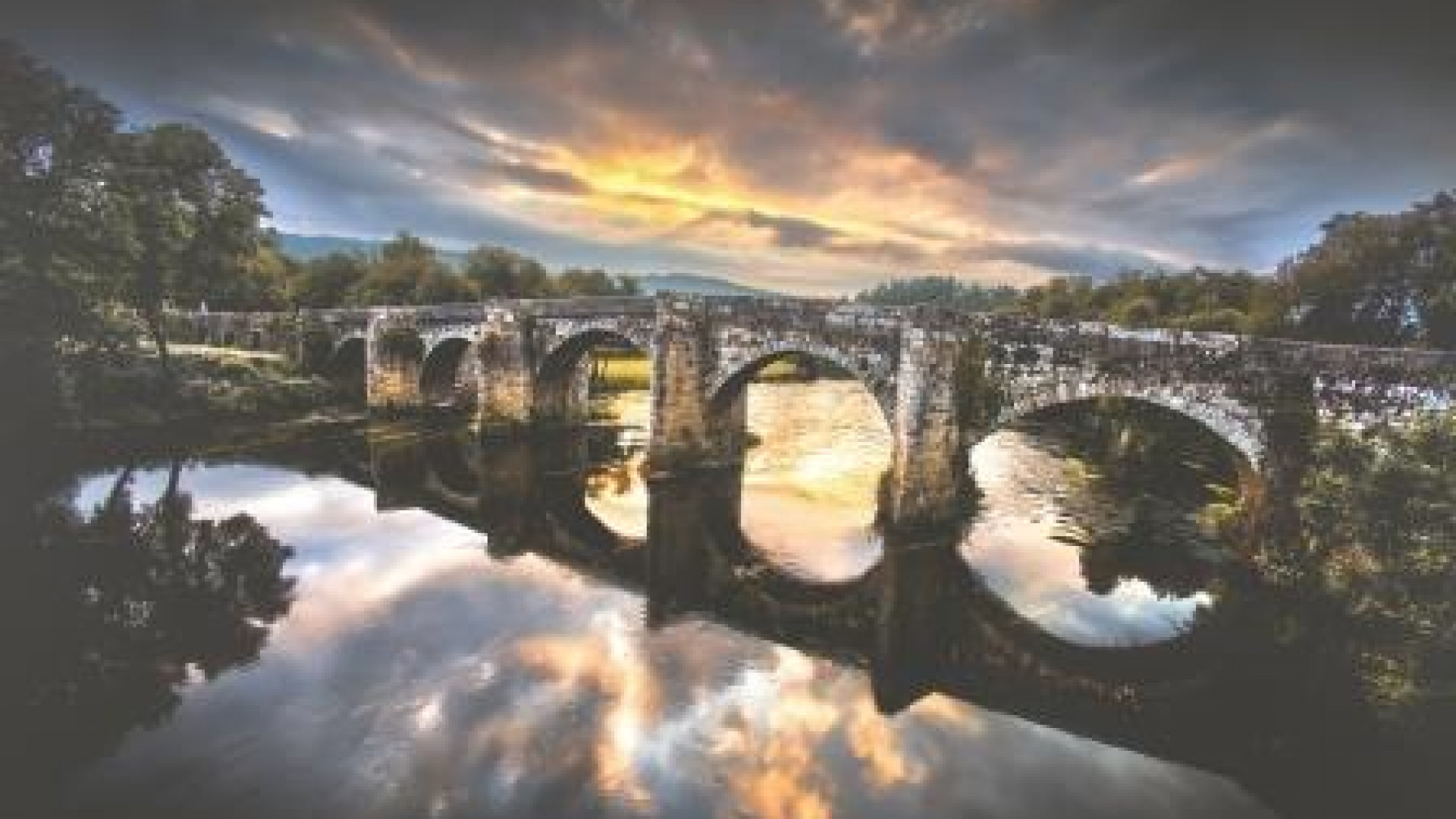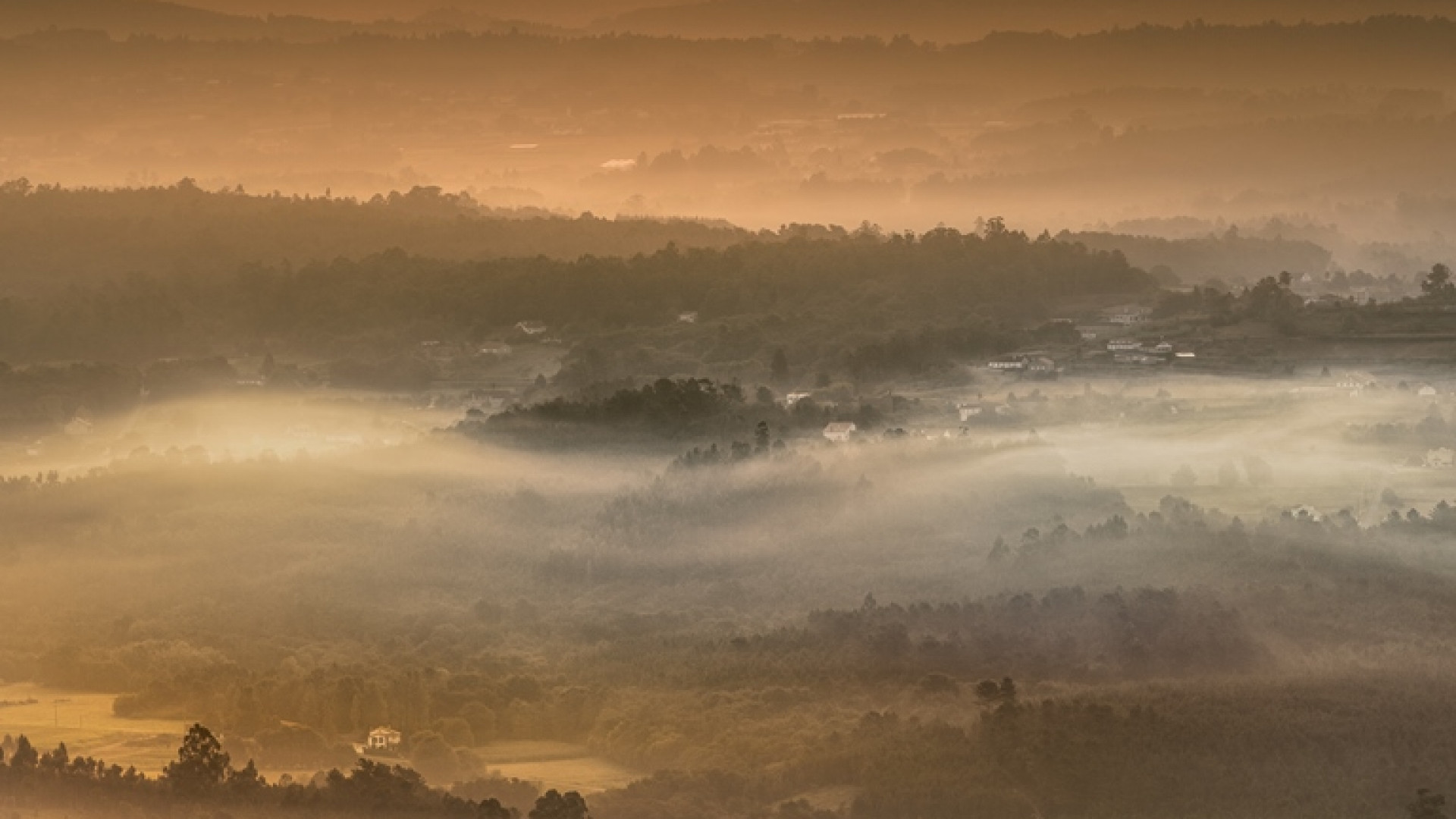Spectacular stone bridge over the River Ulla, nowadays pedestrianised.
Declared an Asset of Cultural Interest in February 2017 It is one of the great heritage and historical landmarks of the municipalities of Teo and A Estrada. For hundreds of years it was the only route to Compostela from the lands of the Vea valley, and it was where the ancient royal roads converged, located in the parish of Reis, on the River Ulla, marking the boundary between the provinces of Pontevedra and A Coruña. It can be reached by taking the regional road between A Estrada and Santiago de Compostela. It is currently on the Xacobean route of the “Camino da Geira and Muleteers Braga-Santiago”.
Its architectural features reveal a Romanesque construction: ogival, with six ashlar arches, three semicircular and three slightly pointed, supported on five large pillars, with triangular cutwaters upstream, and trapezoidal ones downstream up to the end. The bridge slopes down from the central pillar, with a slight curve in the plan, coinciding with this pillar. The exact date of the current bridge is not known, although historians place its construction around the 14th - 15th centuries, replacing or modifying an earlier one, possibly Roman, related to the XIX Roman Road of the Antonine Itinerary, which connected Braga with Lugo and crossed the Pons Vellegia (Pontevea) coming from Aquis Celenis (Cuntis).


